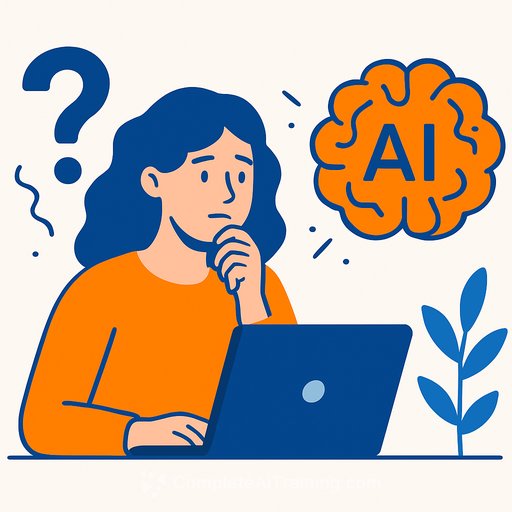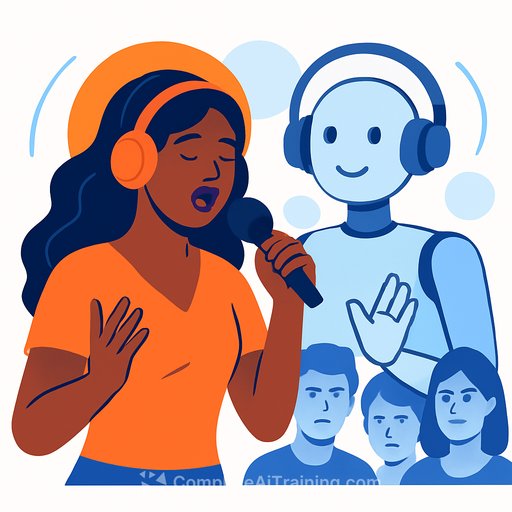Gen Z Is All-In on AI Art - But Confidence Is Playing Catch-Up
The creative industry has crossed the AI line. In a new global survey of 1,700 creatives, nearly half say they use AI tools daily. Yet most don't feel ready. Adoption is high; certainty is low.
That tension is everywhere. AI is inspiring fresh work and faster drafts, but it's also raising uneasy questions about value, pricing, and credit. The energy is real. So is the confusion.
The Gen Z AI Paradox
Gen Z leads usage: more than half say they use AI in daily creative work. But only 37% feel "very prepared" for an AI future. That's higher than Millennials (30%) and Gen X (28%), but still far from confident.
The takeaway: high usage doesn't equal high fluency. Many are great at experimenting; fewer are great at turning that into client-grade output, clear process, and consistent results.
An Industry in Limbo
Across generations, 43% feel energised by AI and 20% feel conflicted. Just 3% avoid it. Clients are asking for AI because it's new and shiny, but also because they think it will cut costs.
Almost 70% of creatives say they don't feel "very prepared." Veterans feel this most-the years spent refining craft collide with clients asking if software can do it cheaper. The job now is proving why your eye still matters.
The New Creative Routine
Prompting is the new Photoshop. Younger creatives are treating it like a daily workout: iterate, refine, push for texture, tone, and lighting that actually serves a brief.
Entry-level roles may thin out as basic production is automated. That means skipping busywork and going straight to direction, strategy, and taste. It's freeing-and destabilising.
Six in ten creatives say clients assume AI makes everything quicker and cheaper. Half admit they've used AI on client work without disclosure. That's a trust issue waiting to happen.
What to Do This Quarter
- Publish an AI use policy: What you automate, what stays human, how you review, and how you protect IP and licensing.
- Quote by outcomes, not hours: If AI speeds you up, price for value delivered, not keystrokes saved.
- Show your process: Include before/after, prompt notes, and human edits in your portfolio. Make the invisible work visible.
- Track time by phase: Research, prompting, curation, editing, QA. Use the data to price with confidence.
- Build a prompt library: Reusable templates for lighting, mood, composition, brand voice, and revision loops.
- Create a disclosure template: One page that covers tools used, datasets/licensing, and human review steps.
Prompting Drills (15 Minutes Each)
- Style match: Recreate a brand's last campaign look with five prompt variations. Document what moved the needle.
- Constraint sprint: Hit a specific brief: 3:2 crop, product at 30° angle, soft rim light, two colorways.
- Revision ladder: Start with a rough output and refine in five steps. Note which prompts gave the biggest jump.
- Client realism test: Produce an image or draft you'd be comfortable shipping after human polish. No shortcuts.
Position Your Value (So AI Doesn't Set Your Rates)
- Taste: Show curation chops-moodboards, references, and rationale for choices.
- Direction: Tie every aesthetic decision to business goals: response, retention, or revenue.
- Systems: Share reusable workflows clients can plug into: naming, file structure, versioning, QA.
Ethics and Client Trust
- Disclose with clarity: Where AI was used, which tools, licensing stance, and how you ensured human quality control.
- Protect IP: Avoid sensitive inputs, confirm rights for training data where relevant, and keep a review log.
- Set expectations: AI can be faster; it isn't always cheaper. You're paid for taste, problem-solving, and outcomes.
For Entry-Level Creatives
Build proof, not fluff. Ship micro-projects weekly: icon sets, product visuals, short reels, storyboard frames. Show taste and iteration speed.
Focus on direction and storytelling. Learn how to brief, critique, and version quickly. The best resume is a public body of work that solves real client problems.
The Bottom Line
AI isn't erasing creativity; it's exposing complacency. The edge goes to creatives who use these tools on purpose, disclose with confidence, and keep their taste at the center.
If you're serious about sharpening prompt skills and workflow, explore practical training built for working creatives. Start with these:
Your membership also unlocks:






